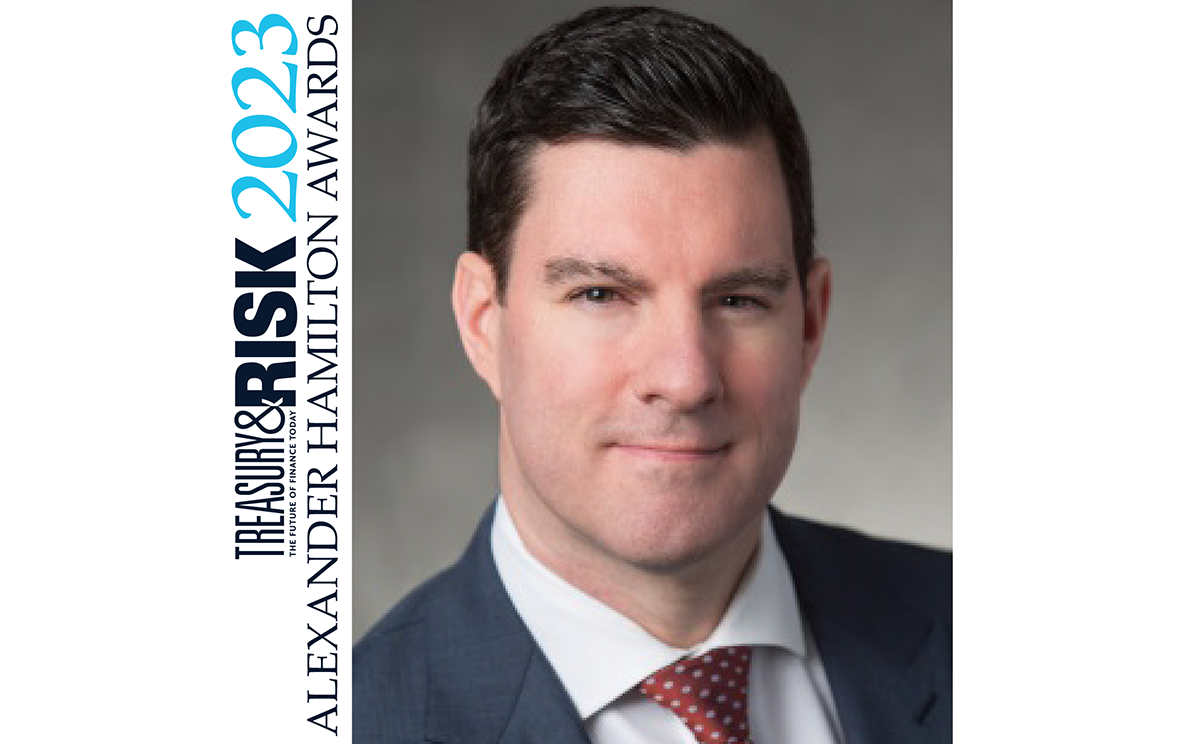 Since the Securities and Exchange Commission (SEC) voted on money fund reform last year, corporate treasurers and finance executives have been waiting for their view of the cash management landscape to clear. Insights have begun to emerge, as fund managers responsible for US$1.87 trillion, or 78 percent of money market fund assets in the United States, have unveiled adaptation plans.
Since the Securities and Exchange Commission (SEC) voted on money fund reform last year, corporate treasurers and finance executives have been waiting for their view of the cash management landscape to clear. Insights have begun to emerge, as fund managers responsible for US$1.87 trillion, or 78 percent of money market fund assets in the United States, have unveiled adaptation plans.
These plans hint at a sizable shift into government money market funds, a smaller institutional prime money fund space, and growth in alternative products.
So far, the overriding theme appears to be that investors will have more options. However, as the market evolves, corporate treasurers who invest in institutional prime money funds need to re-evaluate whether their cash management policies fully reflect the new reality.
Recommended For You
More Options for Investors
Many of the announcements from fund managers have been accompanied by details about new and expanded product lineups, including a number of new offerings in the world of cash management.
Several managers announced "short-maturity" institutional prime money funds, which will only buy securities maturing in less than 60 days, to reduce the likelihood of—although it cannot eliminate—net asset value (NAV) volatility. One fund manager went further, committing to launch a seven-day-maturity institutional prime fund. Such a short time horizon could potentially enable the fund to avoid triggering the new liquidity fees and redemption gate provisions that many investors dislike.
In addition, a number of fund managers have recently launched short-term bond funds as alternatives to prime money funds. The bond funds offer materially higher yields, but at the cost of heightened credit, maturity, and/or liquidity risks.
Another new product garnering attention is private money funds, which are geared toward large institutional investors. Separately managed accounts, while not new, are targeted similarly and are gaining in popularity.
While the industry expects assets to initially shift from prime to government funds due to reform—at least until the dust settles—flows have been muted so far. Assets in institutional government funds have increased 9 percent since reform was enacted in July 2014, but institutional prime funds have also risen, by 6 percent. Seasonal factors affect money fund flows, so it is hard to tell if the data indicates a reform-related preference toward government funds, which will likely intensify closer to the reform implementation date in October 2016.
Product Features Are Key
While money funds have historically offered a one-stop shop for many investors' cash management needs, the regulatory reforms and other developments in short-term money markets mean that most corporate investors will likely have to use more than one cash management product in the future. At the same time, banking regulations have reduced the availability of deposit accounts for institutional investors, so the simplest liquidity products may no longer be an option for some treasurers.
Weighing the positives and negatives of each cash management product, investors will likely shift to more complex cash management strategies involving cash segmentation and utilizing multiple investment products. For example, prime money funds will likely yield significantly more than government funds once interest rates normalize, but they will not transact at a constant net asset value (NAV) of $1, as they did before. Conversely, private money funds may adopt a stable NAV, but they are not subject to the same strict regulations as their public counterparts.
A company's cash management strategy will depend on its size, risk tolerance, and liquidity needs. Taking these factors into account, treasurers may make use of a number of different types of funds, taking advantage of each product's unique features.
Impact on Companies Varies
How the reforms will impact specific companies will vary widely, since corporate treasurers currently utilize money funds in very different ways. According to the Federal Reserve, nonfinancial companies held $548 billion in money market funds in the second quarter of 2015—down 25 percent from 2008, but still a significant portion of those businesses' short-term assets. But although many companies use money funds extensively, including to meet their daily cash flow management needs and as strategic cash buffers, other organizations use them sparingly or not at all.
 The variances between firms are particularly pronounced when one looks at the balance sheets of individual companies. For example, Apple Inc. reported holding $194 billion in "cash, cash equivalents and marketable securities" in its 10-Q dated March 28, and Amazon reported $14 billion in the same category. Of Apple's cash hoard, only $1.5 billion, or 1 percent, is held in money funds. Conversely, Amazon allocates $6.4 billion, or around 46 percent of its cash total, to money funds. If we tighten the definition of "cash" to include only those securities that mature in less than one year, then money funds make up 4 percent of Apple's cash and 51 percent of Amazon's.
The variances between firms are particularly pronounced when one looks at the balance sheets of individual companies. For example, Apple Inc. reported holding $194 billion in "cash, cash equivalents and marketable securities" in its 10-Q dated March 28, and Amazon reported $14 billion in the same category. Of Apple's cash hoard, only $1.5 billion, or 1 percent, is held in money funds. Conversely, Amazon allocates $6.4 billion, or around 46 percent of its cash total, to money funds. If we tighten the definition of "cash" to include only those securities that mature in less than one year, then money funds make up 4 percent of Apple's cash and 51 percent of Amazon's.
Now's the time for corporate treasurers who invest in institutional prime money funds to review and update their cash investment policies in light of the reforms. For example, some policies specifically dictate that money funds must have a stable NAV; these treasurers must determine whether they would be comfortable investing cash in a floating NAV fund. Alternatively, as money fund managers introduce new liquidity products, treasurers may choose to add some of these to their lists of approved investments.
A critical part of the process involves review of how a treasurer uses credit ratings for addressing credit and counterparty risk. With ratings coverage of new liquidity products still unknown, investment policies that take into account all of the "big three" global ratings agencies—Fitch Ratings, Moody's, and S&P—have greater flexibility to ensure safety of principal, liquidity, and yield. Ratings coverage in other markets has shifted as well, so investment guidelines that rely on only one or two legacy rating agencies put treasurers at a competitive disadvantage compared with their peers when investing in the corporate, bank, or structured finance sectors.
Regardless of the changes a treasurer wants to make, altering the corporate investment policy may prove to be a time-consuming process involving board-level approval. The challenge will be greatest for corporations that rely heavily on money funds or those that do not allow sufficient flexibility for investment guidelines to evolve with the markets. Taking the time now to ensure that investment guidelines are flexible will streamline the policy-review process in the future as markets continue to change.
———————————————
 Greg Fayvilevich is a director in Fitch Ratings' Fund and Asset Management group, based in New York. Responsible for Fitch's coverage of U.S. money market funds, Fayvilevich assigns and maintains the sector's ratings, develops criteria and models, and publishes timely research on analytical and regulatory developments affecting the industry, coordinating closely with colleagues in Europe on global coverage. Since 2008, Fayvilevich has held a variety of roles at Fitch Ratings, most recently leading coverage of U.S. closed-end funds.
Greg Fayvilevich is a director in Fitch Ratings' Fund and Asset Management group, based in New York. Responsible for Fitch's coverage of U.S. money market funds, Fayvilevich assigns and maintains the sector's ratings, develops criteria and models, and publishes timely research on analytical and regulatory developments affecting the industry, coordinating closely with colleagues in Europe on global coverage. Since 2008, Fayvilevich has held a variety of roles at Fitch Ratings, most recently leading coverage of U.S. closed-end funds.
© 2025 ALM Global, LLC, All Rights Reserved. Request academic re-use from www.copyright.com. All other uses, submit a request to [email protected]. For more information visit Asset & Logo Licensing.




